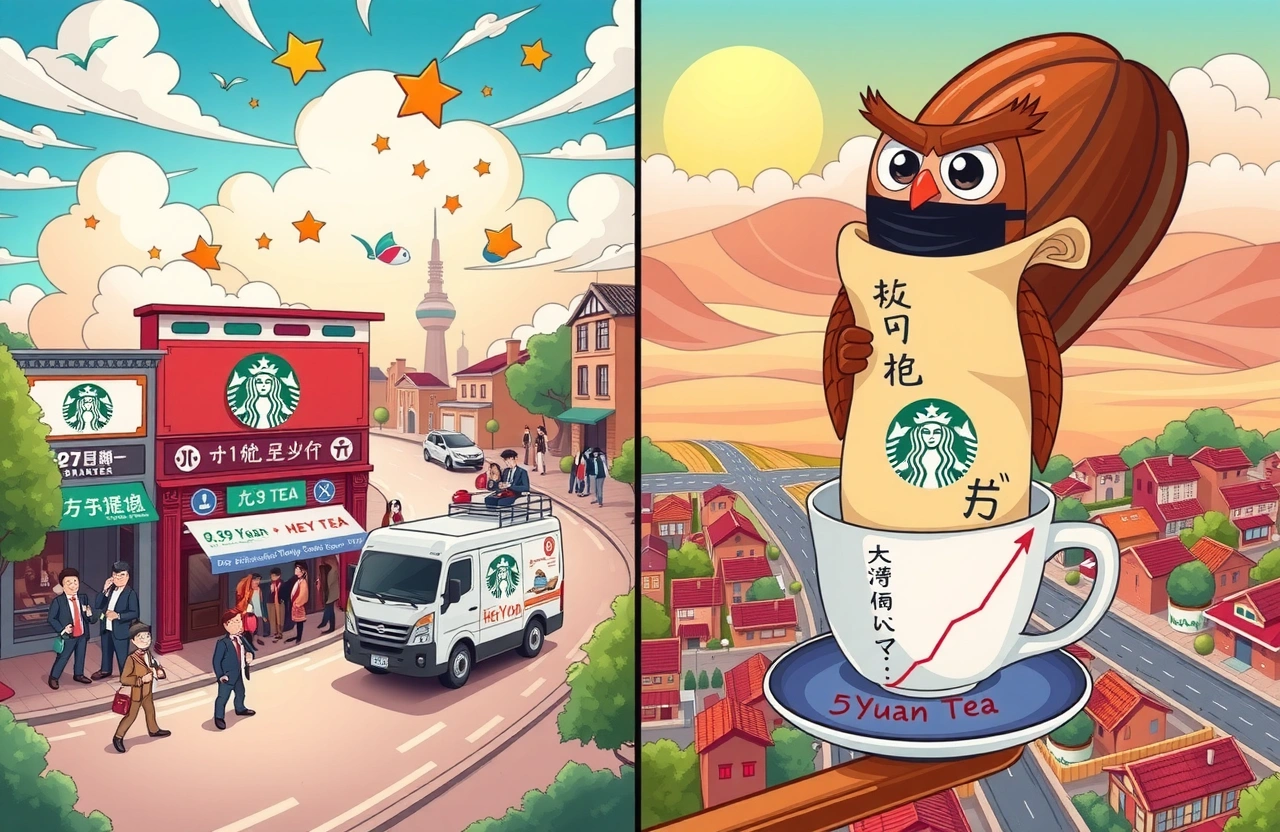Starbucks Rewrites Its Pricing Strategy
On June 10, 2025, white-collar workers across China erupted in celebration as Starbucks (星巴克) announced unprecedented price cuts—the first major reduction in its 25-year history in the Chinese market. Dozens of non-coffee beverages including Frappuccinos, shaken teas, and tea lattes saw prices drop by up to 6 yuan, lowering entry-point beverages to 23 yuan. Social media buzzed as consumers shared screenshots of discounted orders—”14 yuan for Starbucks after coupons!” trended nationwide. This drastic shift represents Starbucks’ audacious bid to reclaim relevance in China’s hyper-competitive beverage arena—a market where competitors like Luckin Coffee (瑞幸咖啡) and Hey Tea (喜茶) have drastically reshaped consumer expectations.
– Landmark policy changes beverage pricing nationwide
– Frappuccinos, tea lattes, and shaken teas discounted across tiers
– Direct consumer responses flooding social media platforms
The Mechanics of Starbucks’ Unprecedented Price Reduction
The Starbucks’ unprecedented price reduction targeted premium non-coffee beverages.
Breaking Down Tag Adjustments
Across Starbucks’ best-selling large cup beverages: Blackberry Ruby Shaken Tea dropped from 31 to 26 yuan; Peach Green Tea Frappuccino descended from 41 to 35 yuan; Black Tea Latte fell from 35 to 29 yuan—representing average savings per cup equivalent to the price of an ice cream cone. This Starbucks’ unprecedented price reduction strategically focused on afternoon consumption segments.
Historic Context of Pricing Shift
Since entering China in 1999, Starbucks maintained premium positioning. Previous pricing adjustments were incremental—a dramatic departure from this coordinated category-wide discount affecting core non-coffee lines.
Market Forces Driving Strategic Reset
Pricing pressure emerged from China’s intensely competitive beverage landscape.
Competitive Realities
The Starbucks’ unprecedented price reduction responded to fundamental market shifts:
– Luckin Coffee’s aggressive promotions distributing 5 billion coupons for beverages discounted at 9.9 yuan
– Hey Tea and Naixue Tea substantially lowering premium beverage prices below 20 yuan
– Ice street beverages like Mixue Bingcheng (蜜雪冰城) establishing footholds at 5-10 yuan price points
The gap became stark: pre-discount Starbucks beverages averaged 30-40 yuan while rivals operated at 30-60% lower price bands—creating unsustainable premiumization.
Tapping Non-Coffee Growth
Guojin Securities (国金证券) projections highlight tea’s dominance: China’s ready-to-drink tea market will hit 368.9 billion yuan by 2025—over 1 trillion yuan larger than freshly brewed coffee.
Starbucks’ Urban Expansion Strategy
County-Level Targeting
Johnson Liu (刘文娟), CEO of Starbucks China, emphasized rural potential during her tenure as COO: “County customers exhibit stronger afternoon consumption habits than urban counterparts.” Execution followed vision—county coverage exploded 166 locations throughout fiscal 2024—near double 2023’s expansion rate—pushing footprint beyond 1,000 counties.
Taste Preference Insights
Rural consumers trend toward sweet beverages over coffee: Frappuccinos and fruit teas surged as gateway products—their lowered prices perfectly targeting trial conversion.
Consumer Response Insights
The Starbucks’ unprecedented price reduction faced complicated reception.
Perception Gap Persists
Despite adjustments:
– A 35-yuan Frappuccino still buys eight Mixue lemonades
– Two Luckin coffees match one base-entry Starbucks tea
Value perception lag challenges Starbucks’ positioning—particularly against aggressive competitors expanding even faster:
– Mixue’s Luckin Coffee hit 1,800+ stores in under six months
– Cotti Coffee surpassed 10,000 outlets—triple Starbucks’ total—within three years
Operational Headwinds Unchanged
Behind pricing shifts, Starbucks’ China fundamentals weakened—fiscal 2024 saw revenues stagnate at $361.76 billion (<1% growth). Profit erosion accelerated:
– Fiscal 2024 net earnings plunged 35% year-over-year
– Chinese revenue plummeted 18% since 2021’s peak
Leadership turbulence compounds challenges: veteran China lead Belinda Wong’s (王静瑛) retirement coincided with executive shuffles.
The Path Forward
Starbucks’ unprecedented price reduction signals recognition that premium branding alone cannot sustain growth in China’s evolving market. Global competition mechanics transformed fundamentally
– Value-driven consumption prioritizes affordability after inflationary cycles
– Domestic chains achieved scale impossible through organic Starbucks-style expansion
Company survival now depends on mastering duality: preserving aspirational perception without surrendering mainstream accessibility—every pricing tier matters.
What Starbucks China pioneered wasn’t just beverage preparation—but nationwide mainstream coffee culture adoption—and unless radical adaptations—like today’s Starbucks’ unprecedented price reduction—continue—that legacy risks fading faster than foam on yesterday’s latte.
Market Analysis Takeaways
Crucial learning emerges:
– Premium brands risk irrelevance resisting price restructuring
– County markets require fundamentally different product portfolios
– Format hybridization emerges as essential competitive insulation
Share your Starbuck price cut encounters—scan price tags at locations nationwide and report observations documenting China’s evolving consumption priorities.



